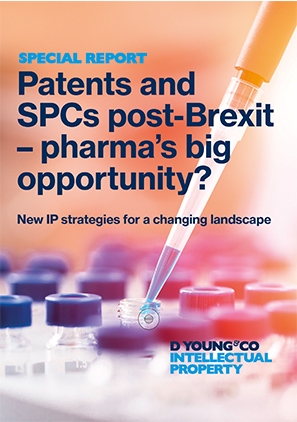T 1123/16 & T 2963/19: clinical trial protocols as closest prior art
Two recent decisions from the EPO Board of Appeal considered whether clinical trial protocols provide the skilled person with a reasonable expectation of success. The decisions add to the growing body of case law in this area.
T 1123/16: Eosinophilic bronchitis/GLAXO
This appeal stems from the opposition division’s decision to reject the opposition.
Claim 1 related to “a composition comprising at least one neutralising humanised anti-human-IL-5 antibody for use in treating a human suffering from steroid-dependent eosinophilic bronchitis, characterised in that the steroid is prednisone and wherein the prednisone is reduced by at least about 90% in said human after treatment.”
The Board of Appeal considered the disclosure of D1, a phase II clinical trial, an appropriate starting point for the assessment of inventive step, as it concerned the treatment of patients with the same medical condition (steroid-dependent eosinophilic bronchitis) using the same substance (a humanised anti-IL-5 antibody) with the same objective (a reduction in prednisone administration). However, D1 did not disclose a therapeutic effect, since it did not disclose any results of the clinical trial; nor did it disclose the minimum level of prednisone-sparing effect (90%).
According to established case law, clinical trial protocols are considered to provide the skilled person with a reasonable expectation of success, unless the state of the art provides the skilled person with an expectation of failure. The reason being that clinical trials are based on existing favourable scientific data (pre-clinical testing in vitro and on animals), taking in to account ethical and economical considerations, and are not based on a general “try-and-see” attitude (see T 2506/12 and T 239/16).
In this case, the Board of Appeal therefore considered whether the state of the art provided the skilled person with an expectation that the treatment would fail. The respondent submitted that several documents concerning asthma treatment showed that there was a negative expectation regarding a successful treatment based on an antibody to IL-5. However, the Board of Apepal did not consider this line of argument relevant as the claim at hand did not require that the patients suffer from asthma. Thus, it concluded the skilled person had no reason to expect that the treatment described in D1 would not succeed.
With regard to the level of reduction in prednisone specified in the claim, the Board of Appeal considered this to be a consequence of pursuing the treatment described in D1, for which the skilled person had a reasonable expectation that a prednisone reduction would be achieved.
Accordingly, the Board of Appeal overturned the opposition division’s decision as the subject-matter of claim 1 lacked an inventive step in view of the clinical trial disclosed in D1.
T 2963/19: Liposomal irinotecan/IPSEN
In T 2963/19, claim 1 related to a combination therapy for treating pancreatic cancer, comprising administering defined amounts of liposomal irinotecan, 5-fluorouracil and leucovorin. The patent was revoked at first instance for lacking an inventive step in view of D15b, a phase III clinical trial.The clinical trial protocol differed from the disclosure of the claimed subject-matter in that it did not disclose the actual effective and safe treatment of the patients (a therapeutic effect). Nor did the clinical trial protocol specify the order in which the drugs were administered or the distinction in the starting dose depending on the allele status of the patient, as required by the claim.
Notably, in T 2963/19, the Board of Appeal accepted that the development of therapy of gemcitabine refractory pancreatic cancer represented a particular challenge, due to the poor prognosis and low success rates of clinical trials. Furthermore, the approval of a clinical study depends on the assessment of the foreseeable risks in relation to the anticipated benefit in terms of relevance of the findings, which does not necessarily imply an expected positive outcome. Thus, the Board of Appeal was not convinced that the disclosure of D15b itself provided the skilled person with a reasonable expectation that the treatment would be safe and effective.
The decision is in line with existing case law that clinical trials provide an expectation of success, unless the state of the art suggests otherwise. The Board of Appeal added that: “The considerations in T 239/16 regarding the expected success following the approval of a clinical trial are evidently closely linked to the further circumstances of the case decided therein and cannot be extrapolated to the present appeal case. The same applies with respect to similar considerations in T 2506/12” (emphasis added).
However, the Board of Appeal considered that the disclosure of D15b was not to be considered by itself. For example, D15b was preceded by reports of beneficial effects of liposomal irinotecan combination therapy in Phase I investigations, and non-liposomal irinotecan in Phase II studies. The patentees themselves had relied upon these disclosures in their arguments for sufficiency and plausibility.
Thus, the Board of Appeal concluded that, in as far as the patent proposes the claimed dosage regimen to be safe and effective in view of these prior disclosures, the same considerations apply in assessing whether a positive outcome could reasonably be expected from the clinical trial in D15b. Accordingly, claim 1 was obvious in view of D15b.
Take home messages
These decisions are in line with existing case law that clinical trials provide the skilled person with a reasonable expectation of success, in the absence of existing prejudices. Considerations regarding an expectation of success in view of a clinical trial protocol are likely to be highly dependent on the facts of each case. Reciting an unknown but inherent result of the obvious treatment may have no bearing on the assessment of inventive step.


